Background: There are fifty-nine National Parks in the National Park system; and eighty-one National Monuments. Although all of the National Monuments are special in their own way; and feature their own natural beauty, my favorite National Monument is one that you’ve probably never heard of: Lava Beds National Monument. For starters, Lava Beds National Monument is located in a remote part of California – the far Northeastern corner; near Tulelake, California, and Klamath Falls, Oregon. Its remote location, however, means that most visitors will get to experience a great deal of solitude in the National Monument, which is something that is always sought after in the wilderness. Many things make Lava Beds a special and unique spot, including the fact that it is an area with the largest total area covered by a volcano (the Medicine Lake Volcano) in the Cascade Range; that it was the site of a bitterly contested war that most Americans have never heard of (the Modoc War); and that it has a great deal of pristine natural beauty.
The most unique thing about Lava Beds National Monument are its many lava tube caves, which were created by lava flows over a period of fifty thousand years from 10,000 to 60,000 years ago. As the lava flowed from the Medicine Lake volcano, the surface cooled and solidified. Underneath the surface, lava continued to flow to various areas, eventually emptying the “tube” underneath. Over the course of time, the rock cooled, cracked, and collapsed, producing openings to the surface. Today, there are over 700 lava tube caves in the National Monument, of which over twenty (20) can be explored. While many National Park Service units have caves; and offer cave tours; none allow as much individual access to caves as Lava Beds National Monument does. Any visitor to Lava Beds has the opportunity to explore any of the open caves at their own leisure; and such exploration is encouraged by the Rangers at Lava Beds. As a matter of fact, the Rangers at Lava Beds are happy to provide visitors with flashlights to explore the caves upon receiving a limited amount of basic information such as a valid Driver’s License.
As there are over twenty caves to explore at Lava Beds, there is something for just about every visitor to explore, from basic spelunking that can be done in a five minute walk to advanced spelunking that could take six to eight hours or longer. Visitors should assess their ability as best they can; and be prepared for the conditions they will find in the caves (cooler temperatures, ranging around ~50 degrees or cooler; and dark, cramped conditions consistent with being in a cave underground). The park service provides a great guide to the caves here; and the Rangers at the Lava Beds Visitor Center also do a great job at providing suggestions on where visitors should head based on their time constraints and skill levels. Most of the caves are clustered on the Cave Loop road near the visitor center; but there are also caves scattered throughout the park as a whole. My guide below is predicated on the caves I was able to visit in a day, which I felt contained many of the parks highlights; but as always, readers should check the conditions, assess their ability, and feel free to modify my guide below based on what you want to do as that is the nature of exploration!
Guide to the Best Caves of Lava Beds National Monument in a Day
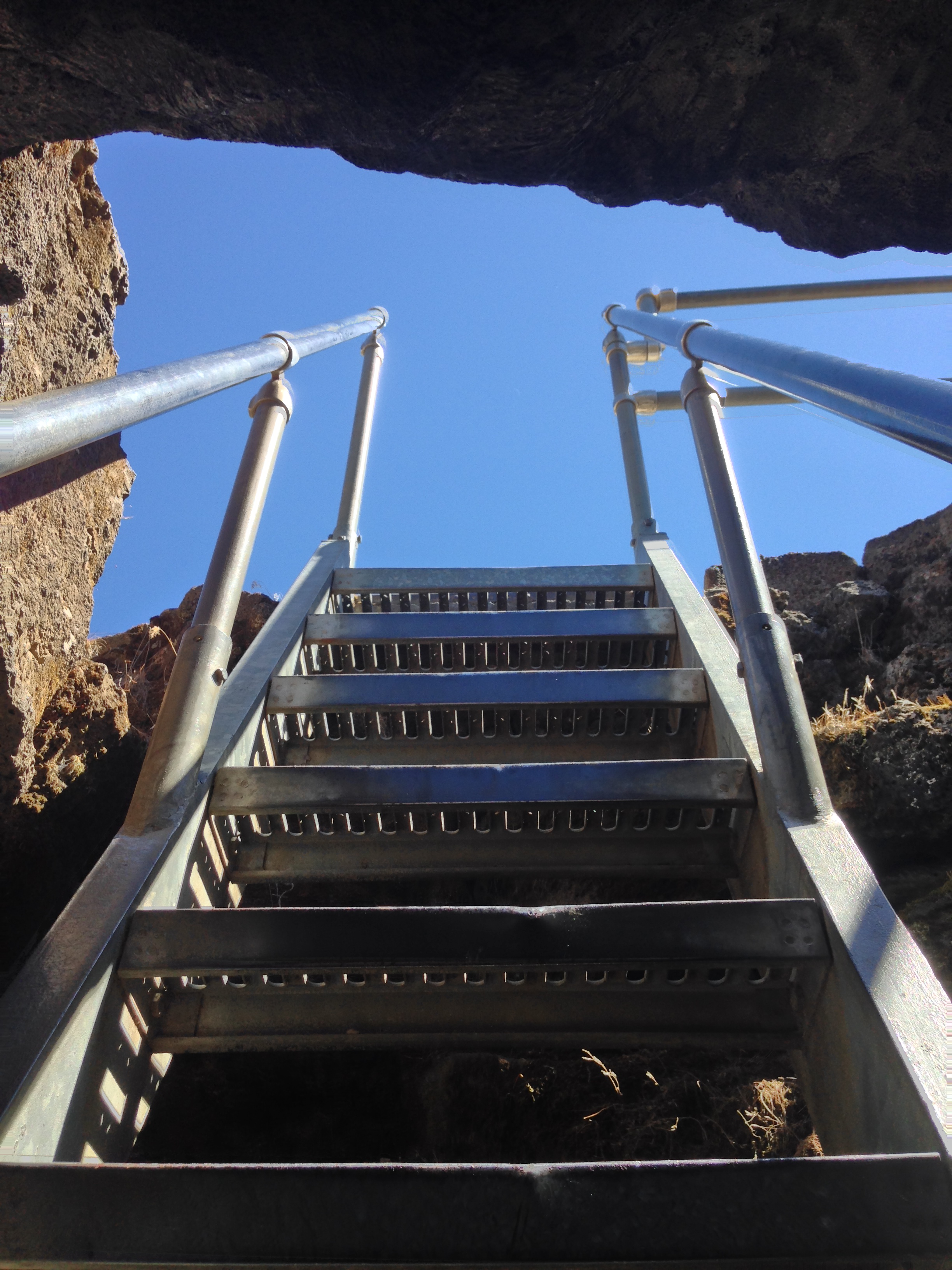
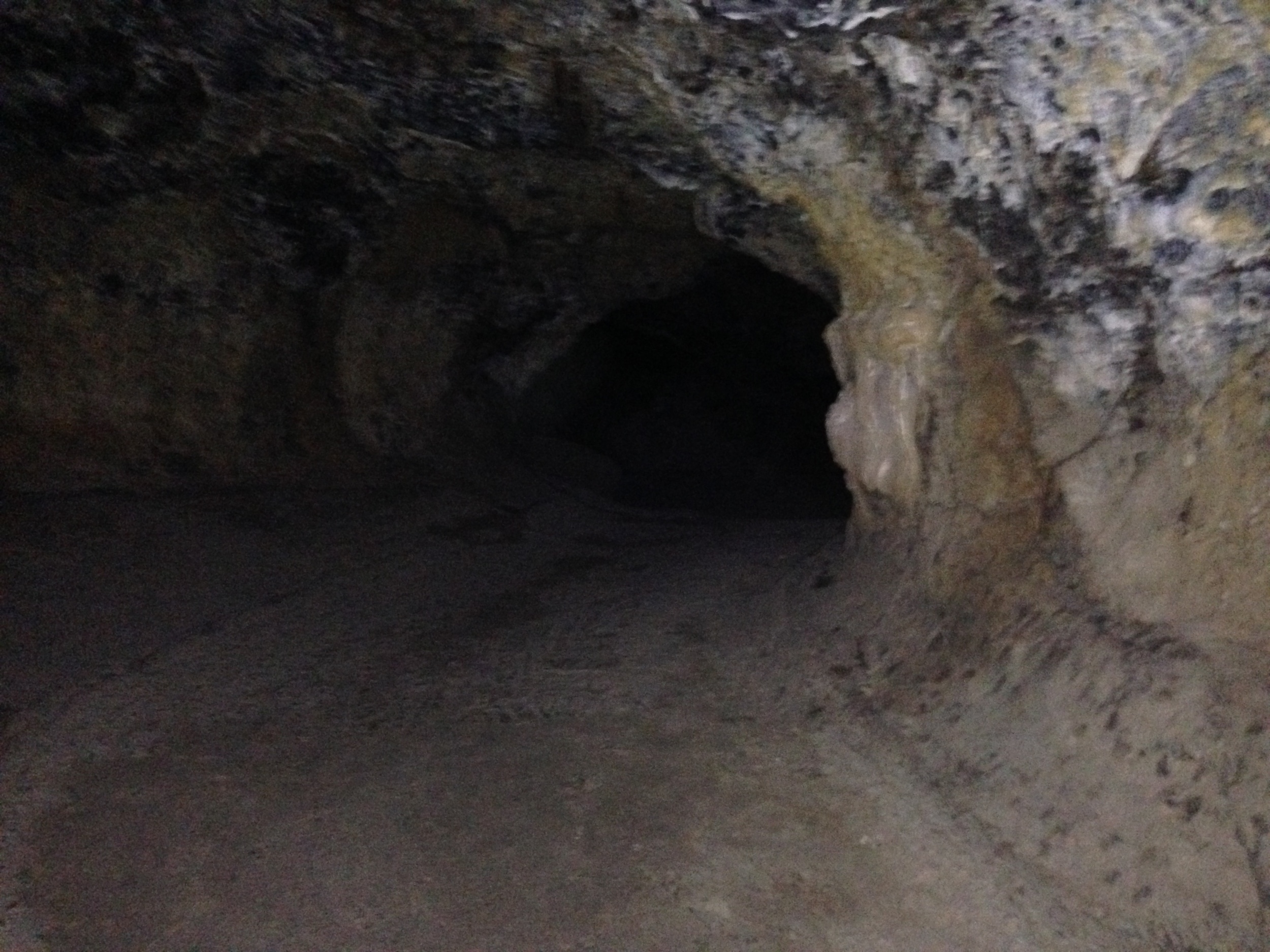

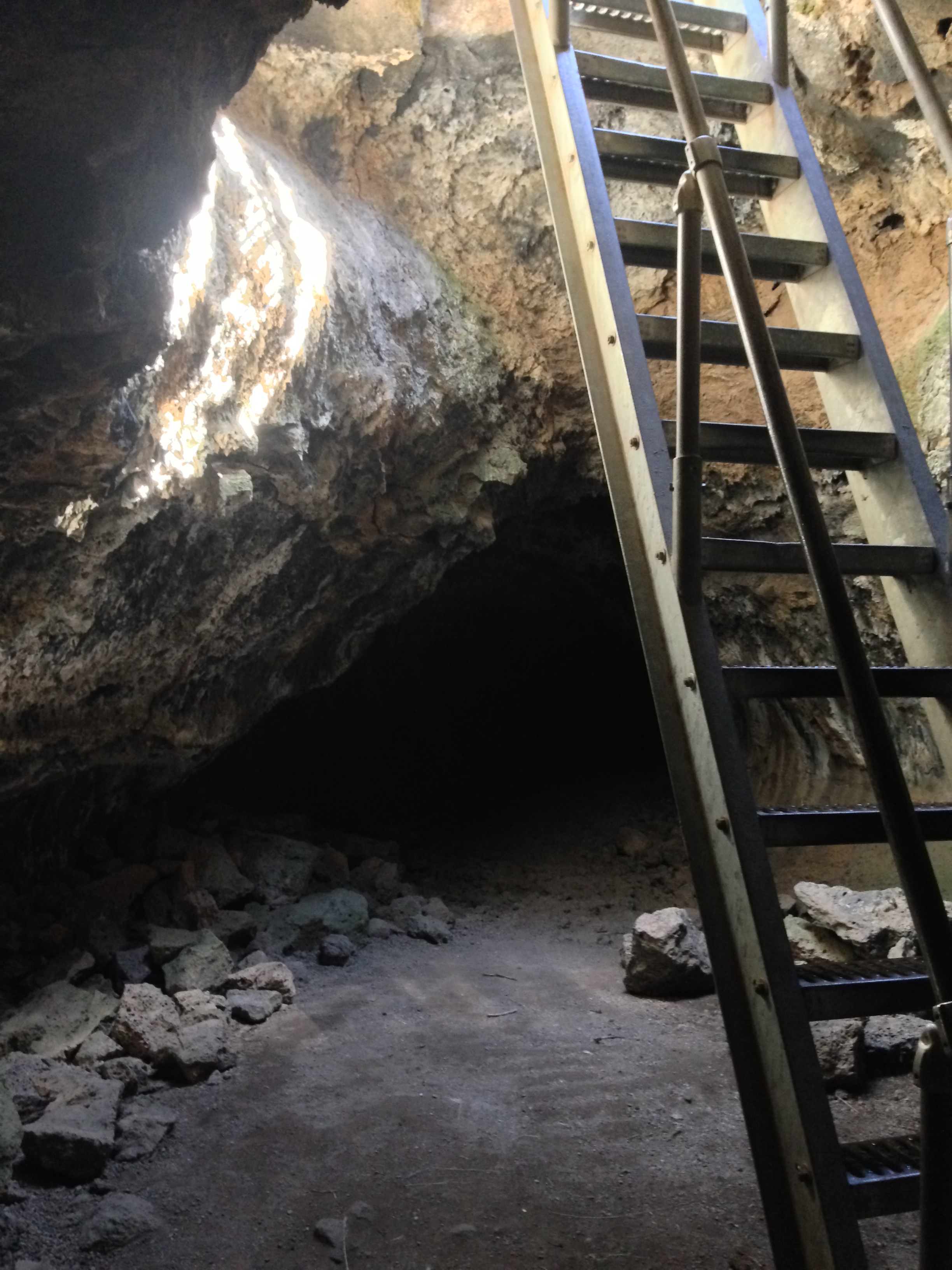
Golden Dome: This cave is the first cave on Cave Loop drive; and it is the first cave that you should explore during your visit to Lava Beds. The cave is a short walk from the road and the descent into the cave is through a narrow opening in the rock on a ladder. Although the Rangers warn all visitors to beware of the infamous “Headache Rock” that is present at the opening, the rock is hard and stealthy, and is something that you will likely bump into either when descending or ascending out of the cave. The reason I say this is that my group was well aware of the risks of the rock after being warned by the Rangers; repeated the warnings about the rock before descending into the cave, yet somehow two of the people in the group still managed to hit their heads on the rock despite being aware of the “danger” it presented!
Aside from Headache Rock, the reason Golden Dome is a great spot to start your day at Lava Beds is because it is a medium cave. It is not large, like the Catacombs; and it is not small or lit with electric lights like the caves by the Visitor Center. Once you arrive at the bottom of the ladder, and move away from the shaft of light that descends, you will be in a completely dark – and alien environment. Among other things, this will allow you to assess your comfort level with caving in safe manner (additionally, it will allow you to assess whether the gear you have brought is appropriate for the larger caves that the park offers). In terms of features, what is striking about Golden Dome are two things: the areas of hydrophobic bacteria that cover portions of the cave’s ceiling, causing a “golden” sheen, and the Figure Eight loop at the rear of the cave that will challenge your navigation skills in the dark. Do note that while the bacteria present an amazing sight, it is sensitive, so be sure that you exercise leave no trace principles, and do not touch the “golden” areas where it exists. Once you are done in the cave, ascend the ladder that you descended while making sure to avoid the infamous Headache Rock on your departure.
Catacombs: Just up the road from Golden Dome, is the Catacombs, one of the park’s longest – and most challenging caves. The trail to the cave gradually descends, and enters the cave. While the cave starts out with broad high ceilings, it narrows gradually over the first eight hundred (800) feet. After this point, the cave is rarely higher than three (3) feet, and crawling is required. In terms of full disclosure, let me state that I did not explore the entirety of the cave, as it takes approximately six to eight hours round trip; but I will say that the portion I did explore was fairly amazing. I will also note that if you are claustrophobic, this cave is not for you as it requires a serious amount of crawling through narrow spaces after the first eight hundred feet.
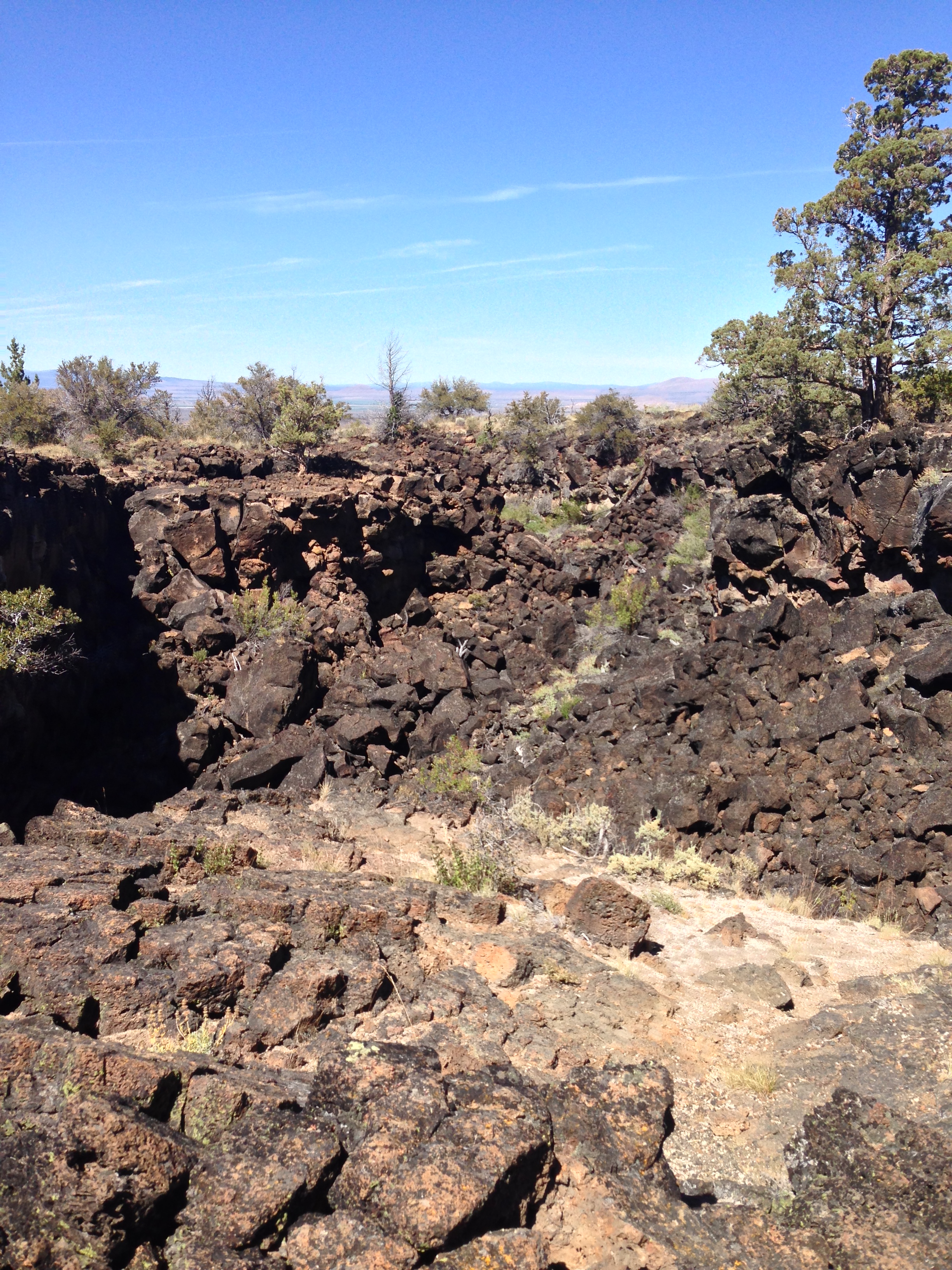
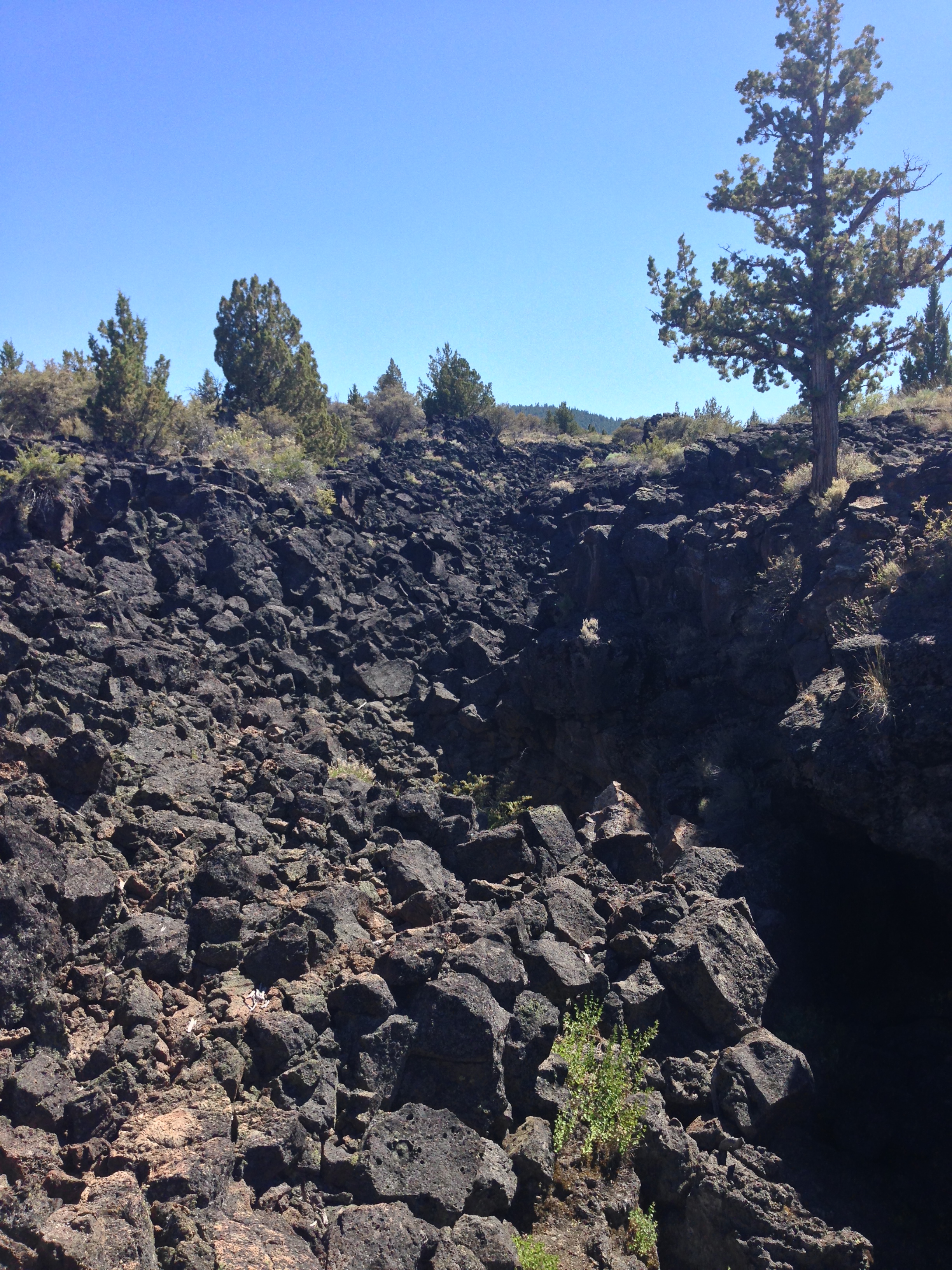


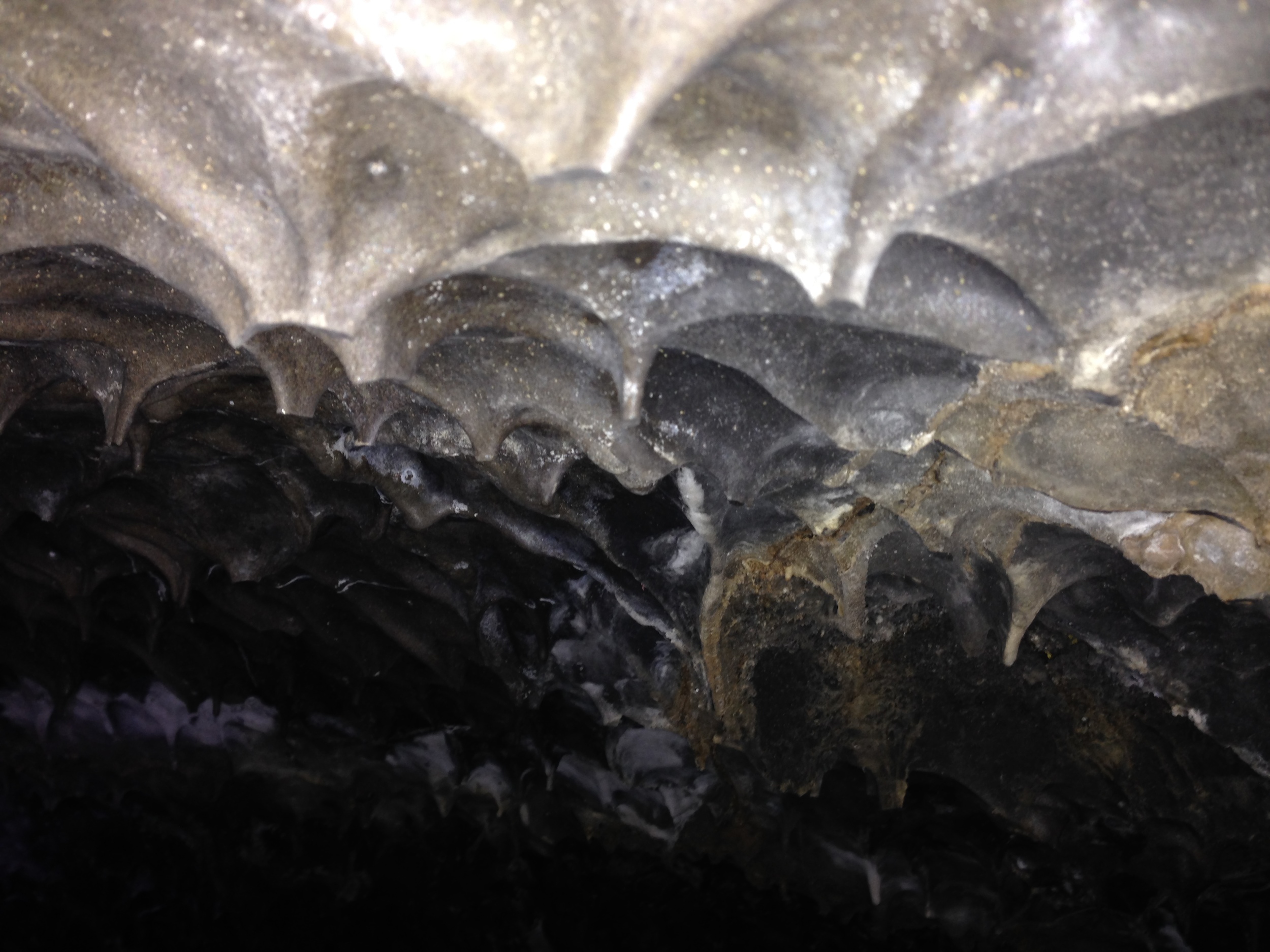
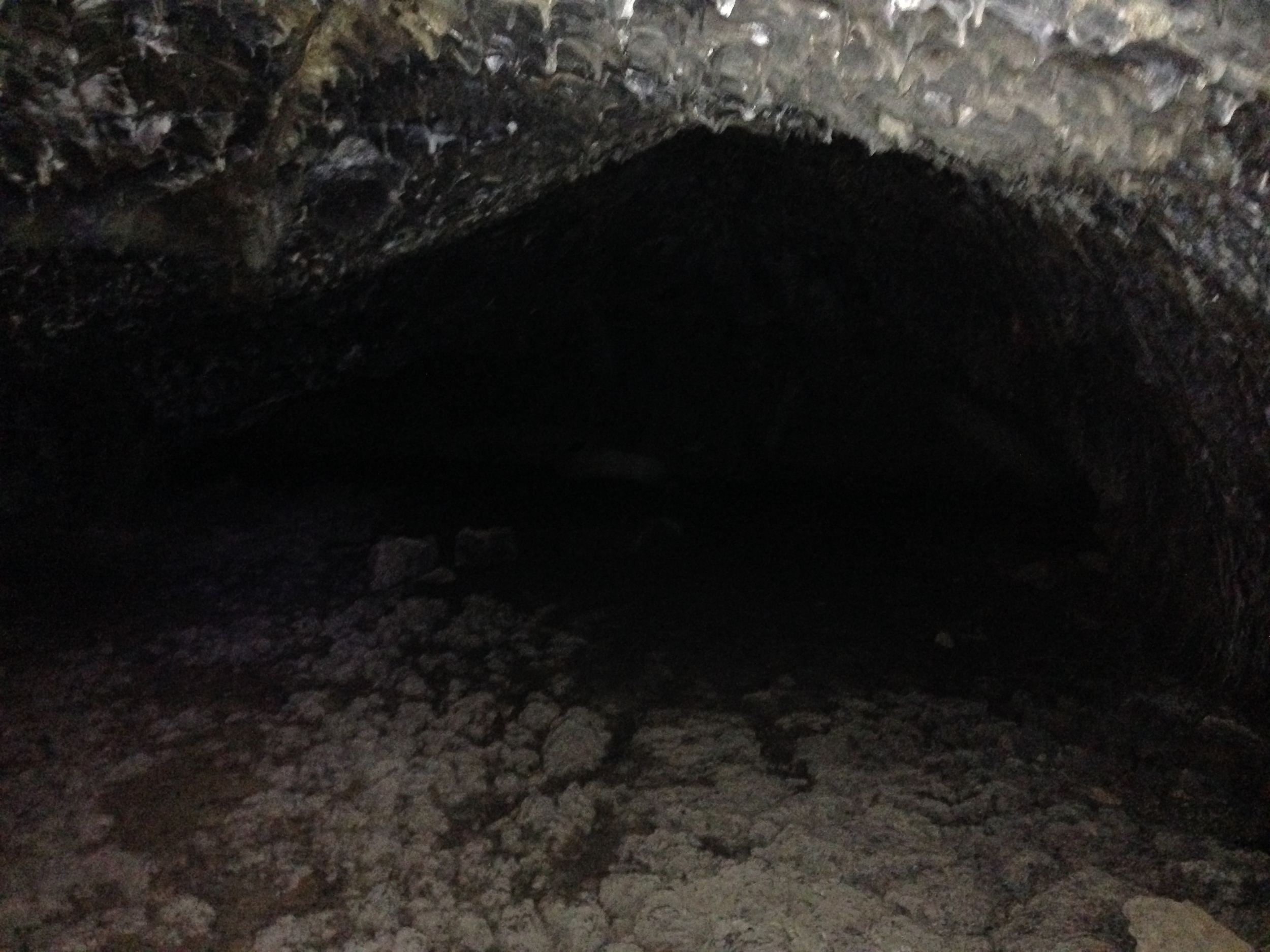
Sunshine: This cave is the next cave up Cave Loop Road from the Catacombs, and was the most well-lit cave out of the caves listed here. Like the Catacombs, Sunshine is accessed by a trail that gradually descends into the cave. The reason the cave is well-lit is because there are two collapses in the roof of the cave that let in a great deal of light. To me, while the collapses made the cave feel less like a “cave” and more of an exposed lava tube, I still enjoyed exploring it because of the hanging plants that were slowly growing in the collapses. The cave also had a completely different feel than the other caves on this list. Finally, this cave is also interesting due to the extremely cold temperatures – almost freezing that existed at its lower levels, which were similar to the larger and colder Skull Cave.


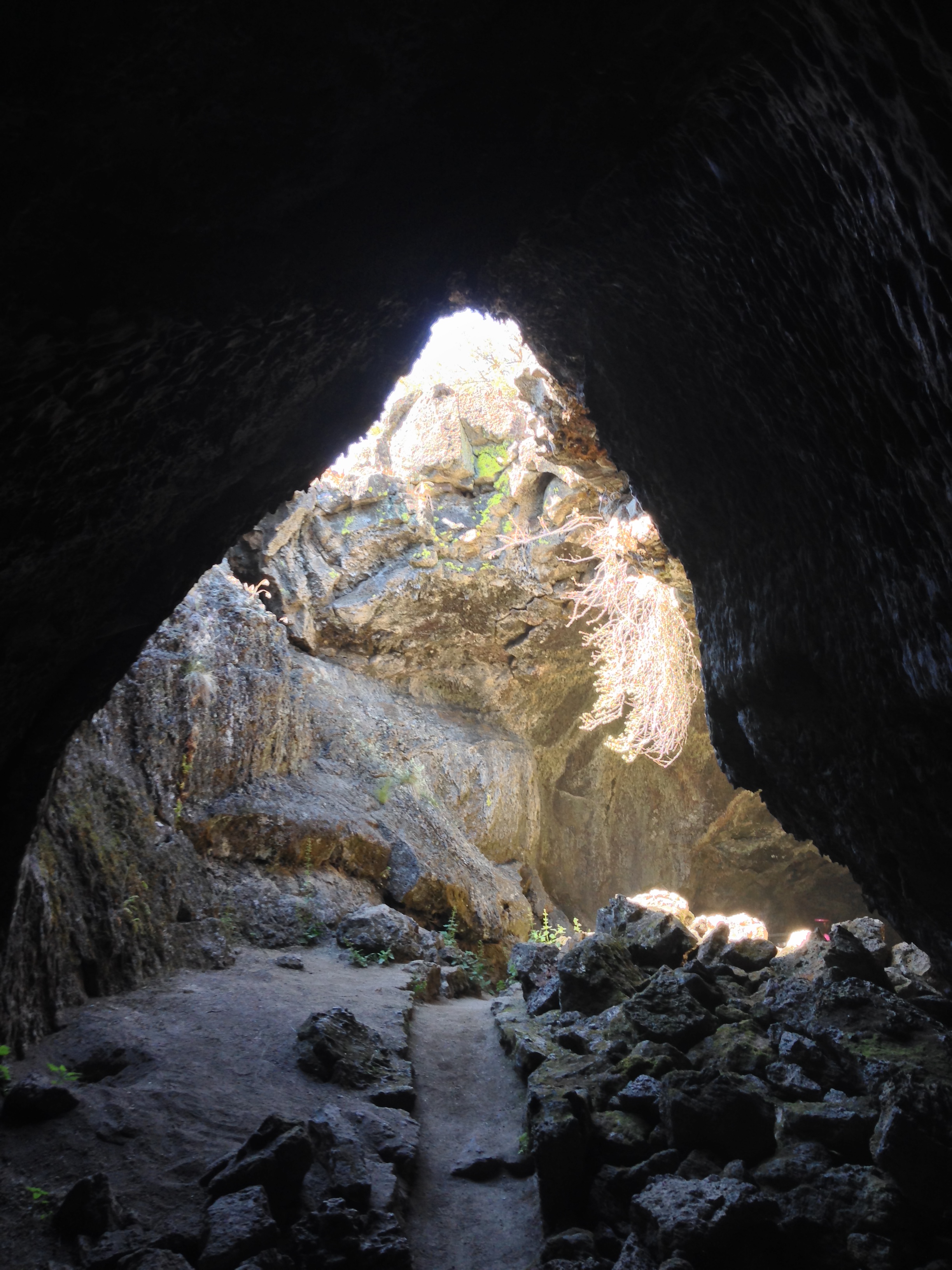
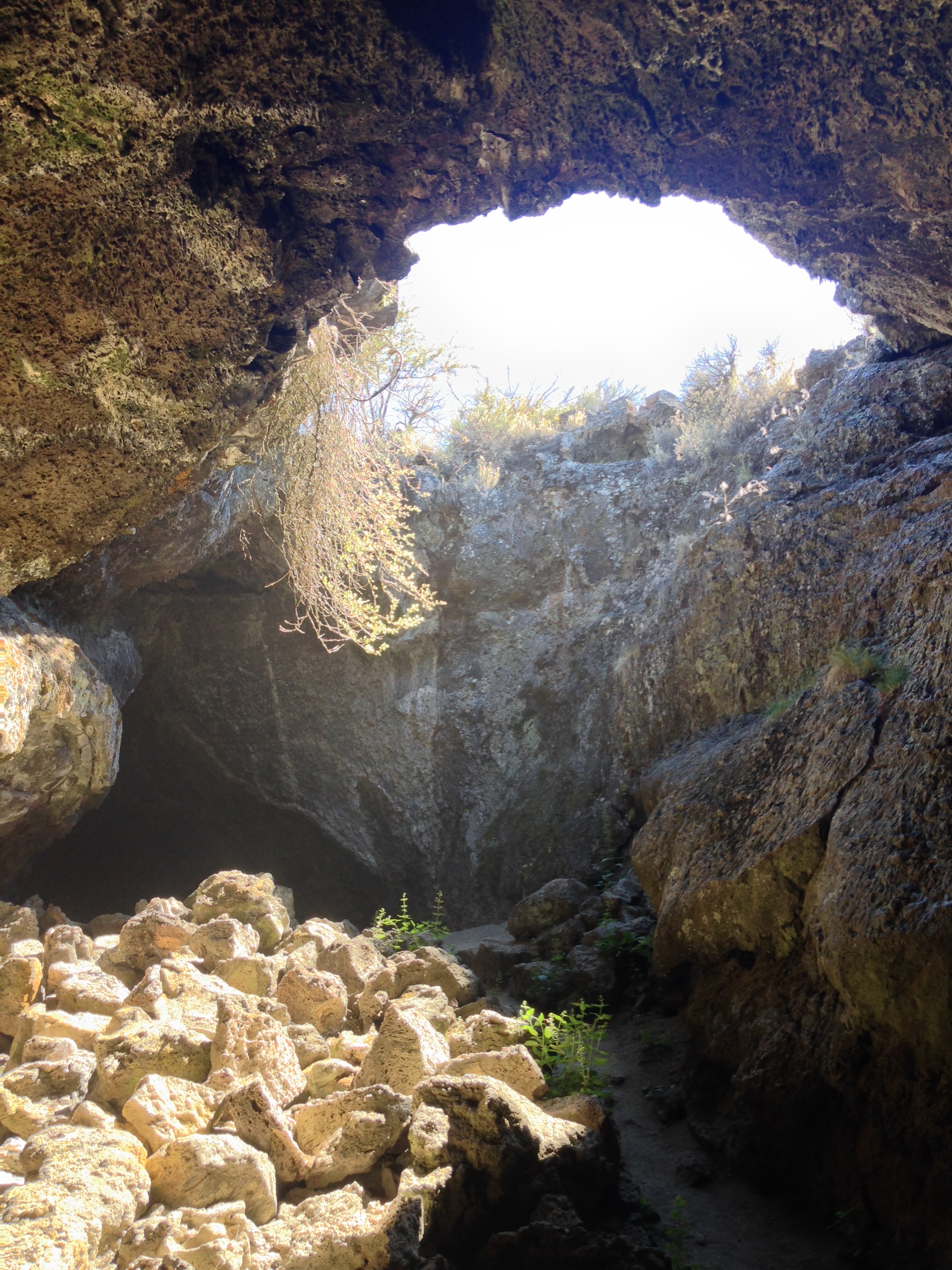
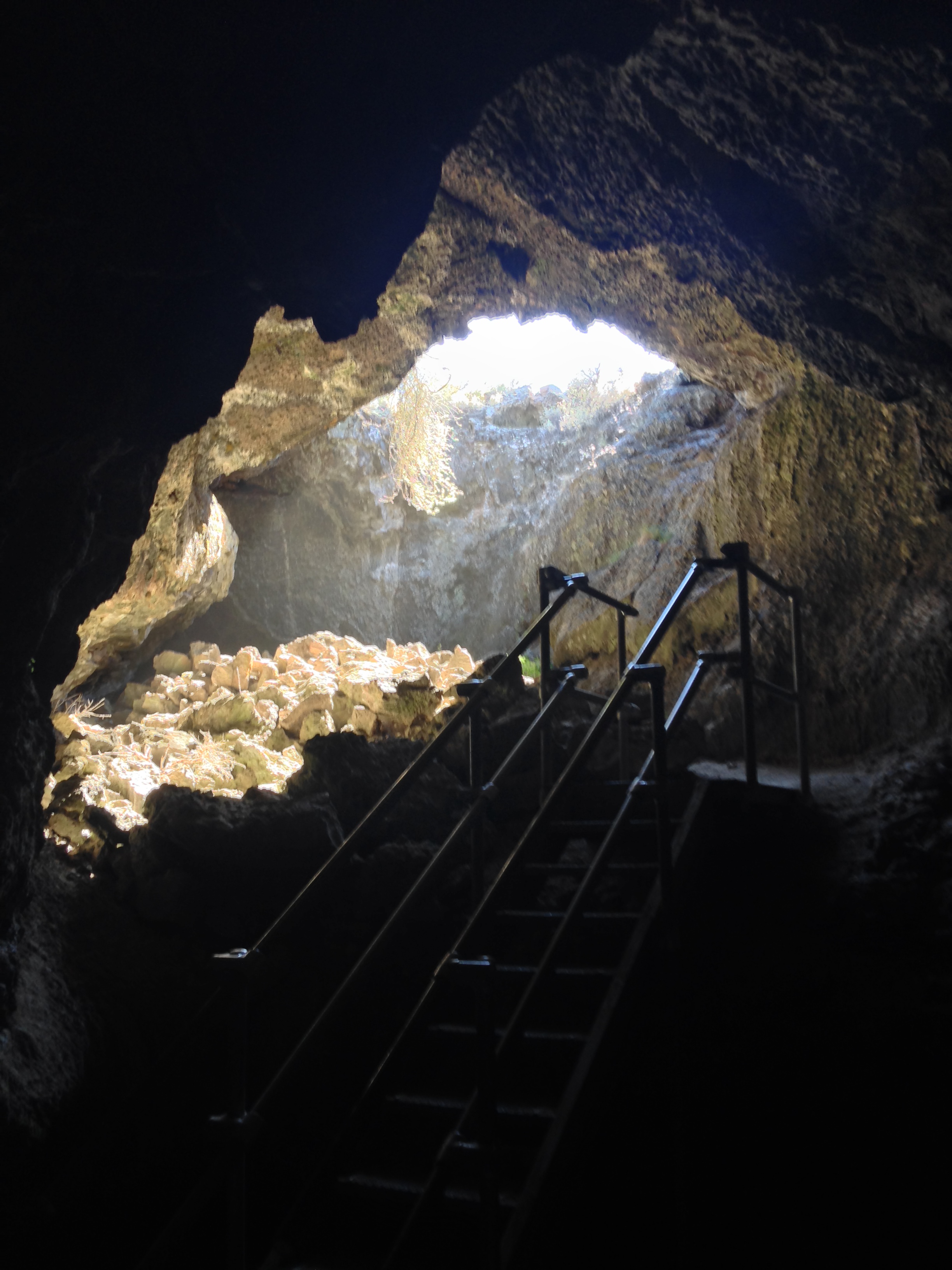
Upper Sentinel/Lower Sentinel: These caves are the last caves on the Cave Loop road, and are really not two separate caves, but one long cave. In my opinion, the best way to experience this cave is to park a vehicle at the trailhead for Upper Sentinel, and walk through the entirety of the cave down to Lower Sentinel. At this point, if you are alone, you can either return back the way you came to your car; or if you are a with a group, someone can return back to the car, and drive it to pick up everyone else down at the Lower Sentinel trailhead.
What was amazing to me about the Sentinel Cave (Upper and Lower) was the scope and size of the lava tube. In terms of length, it is close to the length of the Catacombs cave; however, unlike the Catacombs, it has high, broad ceilings, and is quite large. The other thing to note about the Sentinel Cave is that the hike to the cave passes by a fantastic natural bridge made out of lava just off the trail near the entrance.
Skull Cave: This cave is not located on the Cave Loop road; but is located five minutes from the Visitor Center on the main park road. My advice is that once you have finished exploring the caves on Cave Loop Road; take the main park road to Skull Cave to experience its enormous size and its freezing temperatures. You can read about my experiences in Skull Cave here.
Directions: The Park Service does a great job of providing directions on their website. As I have noted, Lava Beds is in a remote area, so chances are that it will take you a great deal of time to reach the park; but let me assure you that it is worth the visit.
Tips: As I said above, the Rangers at the park do a great job of educating the public; and providing suggestions on which caves to visit; and which caves are closed due to nesting bats. Finally, this park is very family friendly, and I would recommend bringing your family here to experience the feeling of wonder that only cave exploration can provide.

